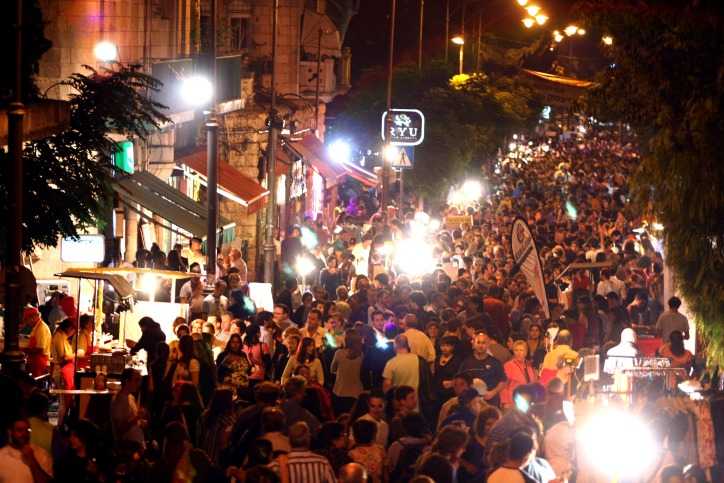
This event has ended
Click here to view this week top events >
The German Colony, although one of Jerusalem's most prominent neighborhoods, has been saddled with a name that, as time passes, has become more and more a misnomer. Putting historical relevance aside, if the municipality wanted to accurately describe the current tenor of the neighborhood, it would be best to swing down to the next branch of the Germanic language tree and rechristen the German Colony as "the English Colony," for that language, not German, not even Hebrew, is the one you'll most likely hear along the German Colony's carefully manicured sidewalks.
The "German" in "German Colony" comes from the area's founders, the Templars, a somewhat heretical religious splinter group of eschatologically-minded German Protestants who in the mid-1800s left Germany for the Holy Land in anticipation of the imminent return of Jesus Christ (Haifa also has a German Colony).
While Jesus elected to defer his Second Coming, the Templars, undeterred, set about establishing a thriving community in the Biblical Emek Refaim (Valley of Ghosts,) the Jerusalem topographical feature which would lend its name to the main street of the German Colony. The assiduously Teutonic industrial prowess of the Templars and the rapid development of the adjoining neighborhoods of Baka, Talbieh and Katamon attracted a large number of wealthy Christian Arabs in the latter parts of the 19th century. They left a prominent architectural stamp on the German Colony, lending it its distinctive modern patchwork of German and Middle Eastern buildings, whose lintels often bear stylized inscriptions in Arabic and German. History did not smile upon the Templars, who found their way of life at an end when they, in a well thought-out scheme, decided to throw their support behind Hitler during the 1930s.
The British authorities in Palestine, taking a dim view of Nazi supporters among the German and Arab communities, proceeded to send the Templars back to Germany. The Colony's Arab population fled during the War of Independence as fighting between Jewish and Arab elements in neighboring areas escalated. The emptied Germany Colony at first housed new Jewish immigrants, but has seen two powerful forces gradually shape it into the neighborhood it is today: gentrification and Americanization.
The beautiful landscaping and stately manors of the colony naturally attracted a more moneyed populace, which in turn engendered the transformation of Emek Refaim from a sleepy neighborhood street into one of the foremost upscale restaurant and shopping districts in Jerusalem. The high quality of life in the revitalized colony then attracted a steadily-increasing flow of immigrants from the English-speaking West, particularly the United States.
The German Colony as a result is now greatly peopled with upper-class Israelis and Americans, with the American community comprising both families and singles, permanent immigrants and visitors. The steady flow of money into the colony, meanwhile, ensures that Emek Refaim remains lined with quality restaurants and high-end boutiques, giving it a classier and more cosmopolitan air than the shopping districts downtown. The neighborhood also is home to the Smadar Theater, Jerusalem's arthouse cinema and a perennial gathering place for the artisterati.
|
Text text text
|
||